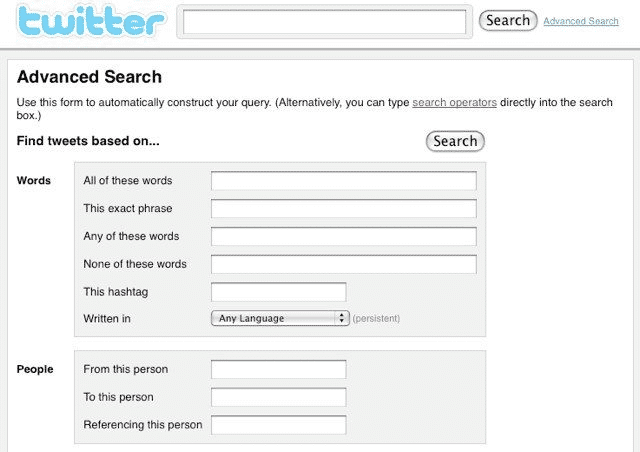Twitter is a fast-paced social media platform that is home to some of the most successful brands you will ever come across on the internet. Companies big and small are all vying for consumer attention – all in 140 characters or less.
We all know how beneficial Twitter can be when it comes to marketing, but did you know you can also use this fast-paced platform to conduct a comprehensive market study? Because almost every brand imaginable is already on Twitter, learning more about your competitors has never been easier.
Learn to conduct a killer competitor analysis using Twitter by reading on.
Keyword Research
Finding competitors you never knew you had is a lot easier thanks to keywords. Keywords are valuable words or phrases that are mentioned in an index – and you can find a lot of them on Twitter.
Researching and listing down all relevant keywords to your industry should help you find out who you’re competing against. Keywords are your gateway to valuable insider information about your industry competitors.
Performing keyword research is a lot easier than you might think. Start off by creating a list of some keywords you think are most relevant to your niche. Include brand-specific phrases from some of your known competitors and throw in a few general ones to help you cover more ground.
With some simple searches, these keywords will help you discover more competitors. Once your list is complete, type the words in Twitter’s search box and take note of the results you get.
If you want to be as specific as possible, create a separate list of keywords for every competitor you want to keep tabs on. This should be composed of keywords and phrases of their own brand verbiage, taken from their website and posts.
Use Advanced Search
Twitter’s Advanced Search tool allows you to put those well-researched keywords to good use. It’s equipped with several filters that are designed to give you the most precise results possible.

Image credit: Mashable
Most first-time users find the Advanced Search option a tad bit overwhelming due to the number of filters available. While there might be a slight learning curve in using Advanced Search, it actually allows you to narrow down your hunt to the most specific parameters possible. Investing your time and energy in playing around with the different options should give you the most accurate results in the long run.
Twitter’s Advanced Search allows you to input all of your keywords at once but experts say that doing so could lead to you missing out on some valuable insight. Instead of typing in all of the precious keywords at once, experts and veteran keyword hunters suggest that you take the time to type them in one by one to get the most precise results as possible.
If you want to learn how to get the most use out of Twitter’s Advanced Search, Mashable created a comprehensive, step-by-step tutorial that can help you learn the ropes with as little learning curve as possible.
Create a List
Every successful competitor analysis campaign is backed up by a list – a very organized and updated list. Twitter helps you keep tabs on your competitors by cutting through the noise on your feed by creating custom timelines.
Lists are a great way to keep an eye on your competitors – from their posting habits down to their content strategy.
Nobody loves lists more than the folks at General Assembly. As a company dedicated to education and career transformation, these guys know how much valuable insight they can gain from creating an Entrepreneurs Twitter List.
While GA mainly uses their public list to give their followers insights from some of the most powerful voices in the entrepreneurial spectrum, you can most definitely use them to spy on your competitors – without being too obvious about it.
List privacy settings can be adjusted from public to private and you don’t actually have to follow your competitors directly to get their updates.
Creating a list for every competitor you have can help you gain valuable insight into their digital marketing strategy, product updates, social media presence and more. If your competitor has several accounts, include them all on specific lists along with publicly listed employees whose updates may be valuable to your research.
If spying on your competitors through the use of lists is so damn easy it’s safe to assume that your brand’s account could be on someone’s list – so you better equip yourself.
Purchasing high-quality followers and other social signals from a reputable provider should help you gain the respect of some of your comrades in the industry – aka your competitors – as long as you’re smart enough to buy from the most reputable companies, who offer the best quality followers.
Learn About their Customers’ Experience
Brands are increasingly using Twitter as a platform to provide social media customer support at lightning speed. As a result, many of their efforts to keep their customers happy are made public.
Hover your cursor over a company’s @mentions, and you’ll get a good idea about what their customers are loving – or hating – about their services and products. You can also see first hand how they handle inquiries, respond to customer complaints and their engagement with their followers overall. If you’re looking for good ideas to mimic, this is a great place to start.
Whole Foods is a company that’s leading the pack when it comes to providing social media customer support. They respond to as many online inquiries and concerns as they possibly can.
Bummer! If you still have the package and/or receipt, please stop in the store for a refund and new loaf on us.
— Whole Foods Market (@WholeFoods) May 10, 2017
By simply scrolling to their Tweets & Replies tab, you should be able to see how a certain brand replies to some of the tweets they receive from customers and followers.
Use the information you get from this to give YOUR customers an even better experience through Twitter interaction.
Keep Tabs on Their Content Strategy
One of the main uses of Twitter is for cross-promotion. If you’ve used Twitter to promote a blog on your website then you can be sure your competitors have done the same. The information-sharing culture that makes it easy to get the word out about your products also makes it extremely easy for you to keep an eye out on your competitor’s content strategy.
Using your highly-organized list, you can easily keep up with all the posts your competitors make. You can be among the first ones to see their latest blog posts as soon as they’re published on their website.
You can review and evaluate their content strategy to see what you can take away from it. Finding out what works and what doesn’t elsewhere can tremendously strengthen your own content strategy – they’re like experiments that you can view from a distance.
Take Advantage of Free Tools
While a lot of competitor analysis can be done solely on Twitter, there’s no harm in venturing outside the platform to get the most precise and comprehensive results.
You can find a lot of free tools online that give you the answers you can’t find by staying on Twitter alone. These tools also have a myriad of uses that can help you with all your marketing efforts – learning to fiddle with them can be worth your while.
Below you’ll find some helpful online tools you can use to make better use of the public information about your competitors.
- Klout: Klout will help you gauge your competitor’s influence based on the amount of interaction they receive from their followers through a specific score system.
- Tweepi: This will help you follow your competitor’s followers by simply typing in their handle.
- TwitterCounter: You can get in-depth insights on your competitor’s social media strategy from how frequently they tweet and how quickly they’re gaining followers.
These free tools can be upgraded to a subscription if you find a need for more tools and insights.
Go Full Sherlock On Your Competitors
Learning as much as you can about your competitors will help you strengthen your own marketing efforts based on the insights you dig up. Ultimately, this makes for a more competitive market that evens out the playing field for all business owners within a particular niche.
Staying on top of your game has never been easier with Twitter – and a few high-quality social signals from a trusted provider. Together, they can help you keep up with your competitors while significantly strengthening your social proof at the same time.
Knowing more about your competitors will teach you more about your target market, your industry, and what your business can be. Taking the time out of your day to conduct a comprehensive and updated competitor analysis may be the very thing that gives you the edge you need to stay ahead of the pack.


